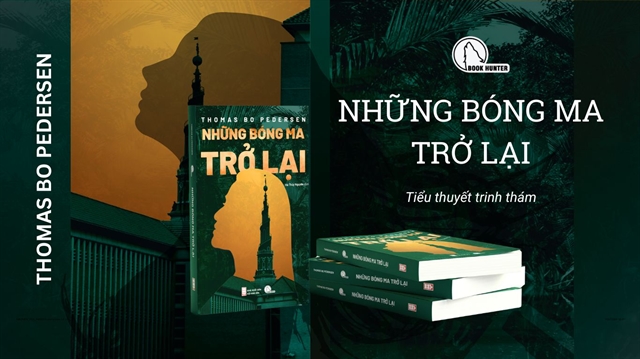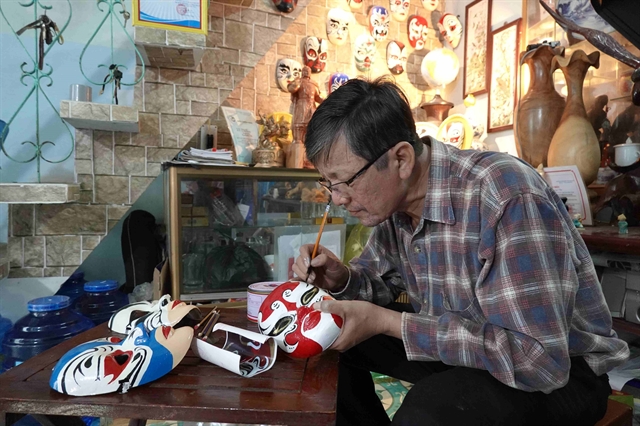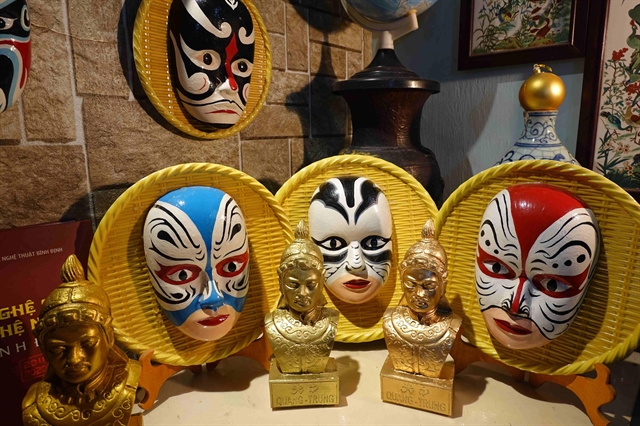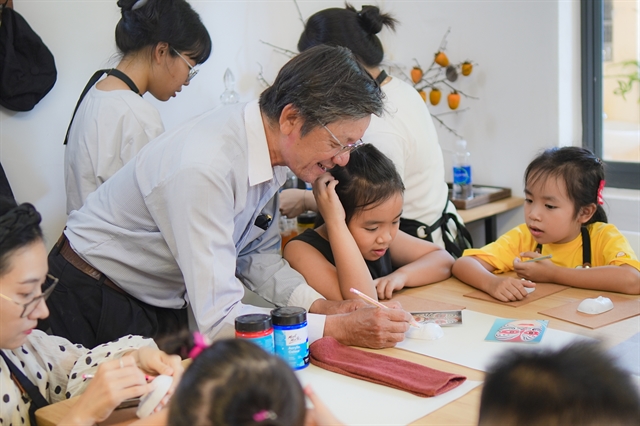 Sunday/Weekend
Sunday/Weekend

By Lê Hương
The art of tuồng (classical drama) has been revered throughout the country for centuries, with many of its most famous actors and actresses hailing from the beautiful central province of Bình Định.
Many of the characters of this ancient theatre are expected to wear vivid and highly stylised make-up, meticulously painted on to form part of the act.
War veteran Trần Ngọc Vân, 60 something, from Quy Nhơn City, Bình Định, has spent many years creating masks of the various stage characters as souvenirs. He bases his mask on the detailed face pain of this theatre tradition.
Though he has not been trained as a painter or an artist, he has grown his passion for the performances, since childhood, when he often accompanied his father to tuồng performances.
Working as a tourist guide, a cameraman, and a photographer, he has had many chances to watch the revered shows.
"Many times I brought tourists to an exhibition of tuồng masks and live performances at the provincial museum, which they loved,” he said. “Many of them wanted to learn more about the art. This gave me the idea to make tuồng art souvenirs for foreign tourists.”
Three generations of Vân's family have been working as artists in traditional theatre. His grandma performed, while his parents fell in love on the stage, and his mother even performed when pregnant.
“Officials from the provincial Culture and Information Department have implemented many intangible projects, including developing local traditional opera,” he said. “I have a new vision for my homeland and its special arts that have not been realised to the full.”
 |
| ATTENTION TO DETAIL: Trần Ngọc Vân makes tuồng masks as souvenirs. — VNA/VNS Photo Tường Quân |
Vân is among those who have compiled dossiers seeking "Master Performer" titles for various local tuồng artists.
“I have seen the artists sacrifice too much for the art,” he said. “Some have spent 50 years performing before being eligible to be recognised as Meritorious Artists or People’s Artists. They are the source for me to do something to preserve Bình Định’s traditional culture, and to harness the art as a tourist product.”
Vân has travelled to HCM City and various ceramic handicraft villages to research and choose the best material for his masks. He ended up choosing composite plastic, due to its long durability and stable background for holding colours. He has also consulted many tuồng artists in efforts to perfect masks.
For Vân the most challenging stage is making the moulds for the masks, which are painted with vivid features to highlight the nature of the many characters.
His masks bring the stories alive, with each colour having a specific meaning.
“The tuồng artists in Việt Nam use three colours for face makeup,” he said. “Red, white and black express the various characteristics. Red symbolises loyalty of the characters to the country and the people that are ready to sacrifice for the nation. White is for mandarins with dishonest characteristics. Black is used for fierce characters. Our Vietnamese theatre has special designs for costumes and make-up.”
 |
| ICONIC IMAGES: Vân's products at his home. VNA/VNS Photo Tường Quân |
Young artist Đinh Thị Thu Duyên is also fascinated by the mask-making process. She is a keen student of Vân and is eager to learn more about this art form.
“The most challenging thing when drawing such a mask is expressing the character's soul,” Duyên said. “A bad character should have a fierce face, and a good character should look gentle at a glance. It is important to know how to mix colours and combine lines and patterns so that an audience, who doesn’t understand colours and the wider art, still understands the soul of the characters. That’s what I’m still learning from Vân."
Visitors to the province also often try their hand at decorating their masks. Vân and his students hope this ancient craft will never fade away, so he hosts training classes for making tuồng masks with local children and foreign tourists.
 |
| ART CLASS: Vân likes to teach children the skills of drawing tuồng masks. VNS Photo Minh Anh |
Luther Fernandez from the Netherlands is excited by the small masks that he draws under Vân’s guidance.
“It’s interesting to me,” Fernandez said. “I did not know that each colour could express a different character. I think the art of tuồng is unique and artists spend lots of time to make up their faces, which helps show the roles they play.”
Vân hopes to take his work one step further, and has a plan to find more materials for his products like using spathes of areca palms and coconut trees, which are more environmentally friendly. VNS
 |
| PAINTING FACES: Foreign tourists are fond of the art. VNS Photo Minh Anh |




